Blog Posts Tagged Semiconductor Module

Modeling a THz Photoconductive Antenna with COMSOL Multiphysics®
Photoconductive antennas are commonly used in terahertz engineering. Learn how these devices work and how to model one with the Semiconductor Module and RF Module.

Can COMSOL Multiphysics® Solve the Hydrogen Atom?
In this blog post, you’ll get an introduction to quantum mechanics and learn how to model the hydrogen atom.

Extracting Specific Contact Resistivity with a Benchmark Model
You can now add contact resistance to metal contacts using the Semiconductor Module. In this blog post, we’ll explore a benchmark model that takes advantage of this new functionality.

Optimizing Solar Cell Designs with a Simulation App
The SolCelSim app, designed by an MSc student at the University of Zilina, enables researchers to simulate solar cell designs, even if they are unfamiliar with simulation software.
Simulating a Silicon Quantum Dot in a Uniform Magnetic Field
Solar cells, LEDs, displays, photodetectors, and quantum computing are all potential applications of quantum dots, an essential aspect in the field of nanotechnology.
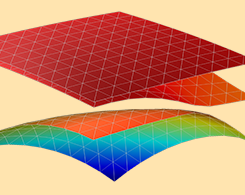
k • p Method for Strained Wurtzite GaN Band Structure
Model a wide range of semiconductor systems, such as particles with spins and strained wurtzite crystals, using multicomponent wave function functionality in the Schrödinger Equation interface.
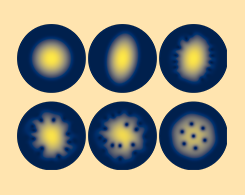
Model Vortex Lattice Formation in a Bose–Einstein Condensate
Bose–Einstein condensation can cause superfluidity, superconductivity, lasers, and trapped dilute cold atoms. When such systems are subjected to rotating perturbation, it forms a vortex lattice.

Computational Electromagnetics Modeling: Which Module to Use?
If you work with a particular electromagnetic device or application area, you might be wondering which module in the COMSOL product suite is right for you. Keep reading for a comprehensive intro.
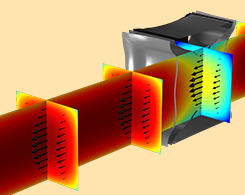
Three Semiconductor Device Models Using the Density-Gradient Theory
You can use the density-gradient theory to model semiconductor devices. Here are 3 examples: a Si inversion layer, Si nanowire MOSFET, and InSb p-channel FET.
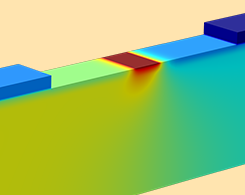
Intro to Density-Gradient Theory for Semiconductor Device Simulation
The density-gradient theory is a computationally efficient way to include quantum confinement in the conventional drift-diffusion formulation commonly used for simulating semiconductor devices.
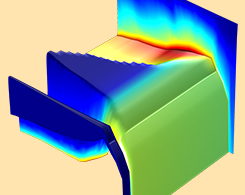
Simulating Radiation Effects in Semiconductor Devices
Analyzing radiation effects in semiconductor devices is an important capability for consumer electronics, medical imaging, nuclear engineering, aerospace, and a wide range of other industries.

Hydrodynamic Thermal Transport in the Kinetic-Collective Model
F. Xavier Alvarez from the Universitat Autònoma de Barcelona (UAB) discusses using COMSOL Multiphysics® to model heat transfer at the nanoscale and better understand transport processes.

How to Simulate the Carrier Dynamics in Semiconductor Devices
Learn how to simulate carrier dynamics in semiconductor devices with 2 examples: reverse recovery and forward recovery PIN rectifier models.

How to Model the Interface Trapping Effects of a MOSCAP
Looking to analyze interface trapping effects in a MOSCAP? Learn how to use a feature in the Semiconductor Module that enables you to add charging and carrier capture/release effects to a model.

Simulating the Tunneling Current Across a Graded Heterojunction
Interested in semiconductor design? Get an intro to the theory behind quantum tunneling as well as a demonstration of simulating the tunneling current across a graded heterojunction.

Self-Consistent Schrödinger-Poisson Results for a Nanowire Benchmark
This benchmark model of a GaAs nanowire validates the Schrödinger-Poisson Equation multiphysics interface, which is useful for modeling systems with quantum-confined charge carriers.

Evaluating a Schottky Diode with a Semiconductor Benchmark Model
We present a model of a Schottky diode with benchmarked results, validating the use of simulation to analyze the performance of semiconductor devices.

Studying the Program and Erase Cycle of an EEPROM Device
Using the Semiconductor Module, you can study the program and erase cycles of an electrically erasable programmable read-only memory (EEPROM) device.

Optimizing ISFET Designs with Multiphysics Simulation
Ion-sensitive field-effect transistors (ISFETs) measure pH levels for soil analysis, the production of dairy products, and more. Multiphysics simulation can help us optimize these devices.

Modeling a MOS Capacitor with the Semiconductor Module
MOS capacitors (MOSCAPs) contain 3 main parts: a semiconductor body or substrate, an insulator film, and a metal electrode (or gate). You can use the Semiconductor Module to model MOSCAP designs.
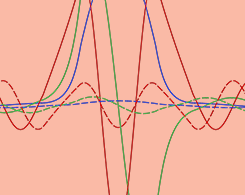
Learning Quantum Mechanics Concepts with Double-Barrier Structures
Quantum mechanics is a notoriously difficult subject to learn — and teach. Modeling a double-barrier structure is an effective way to teach quantum mechanics concepts to physics students.

Computing the Band Gap in Superlattices with the Schrödinger Equation
You can easily compute the effective band gap for a superlattice structure by using a predefined Schrödinger Equation interface and building a simulation application.
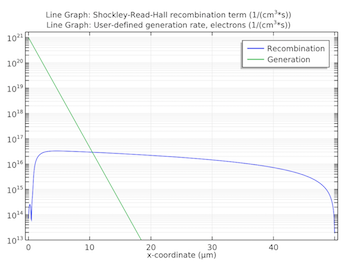
Analyzing a Silicon Solar Cell Design with the Semiconductor Module
You can model a solar (or photovoltaic) cell consisting of a 1D Si p-n junction using the Semiconductor Module add-on. We feature a tutorial model to provide more details.
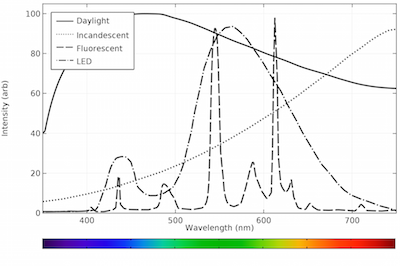
Calculating the Emission Spectra from Common Light Sources
We use COMSOL Multiphysics® to calculate the emission spectra of 4 common light sources: natural daylight, incandescent light bulbs, fluorescent light bulbs, and LED bulbs.
